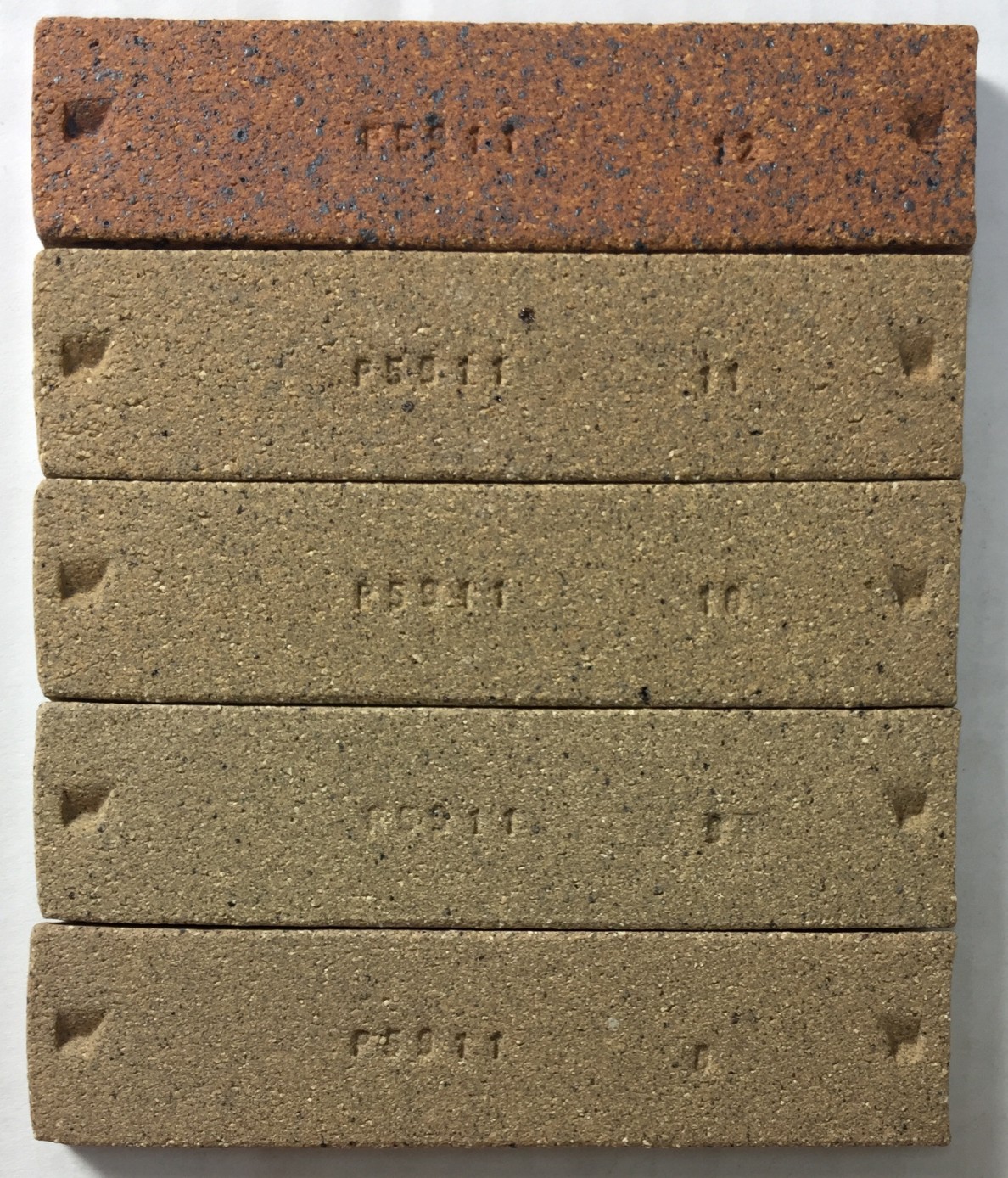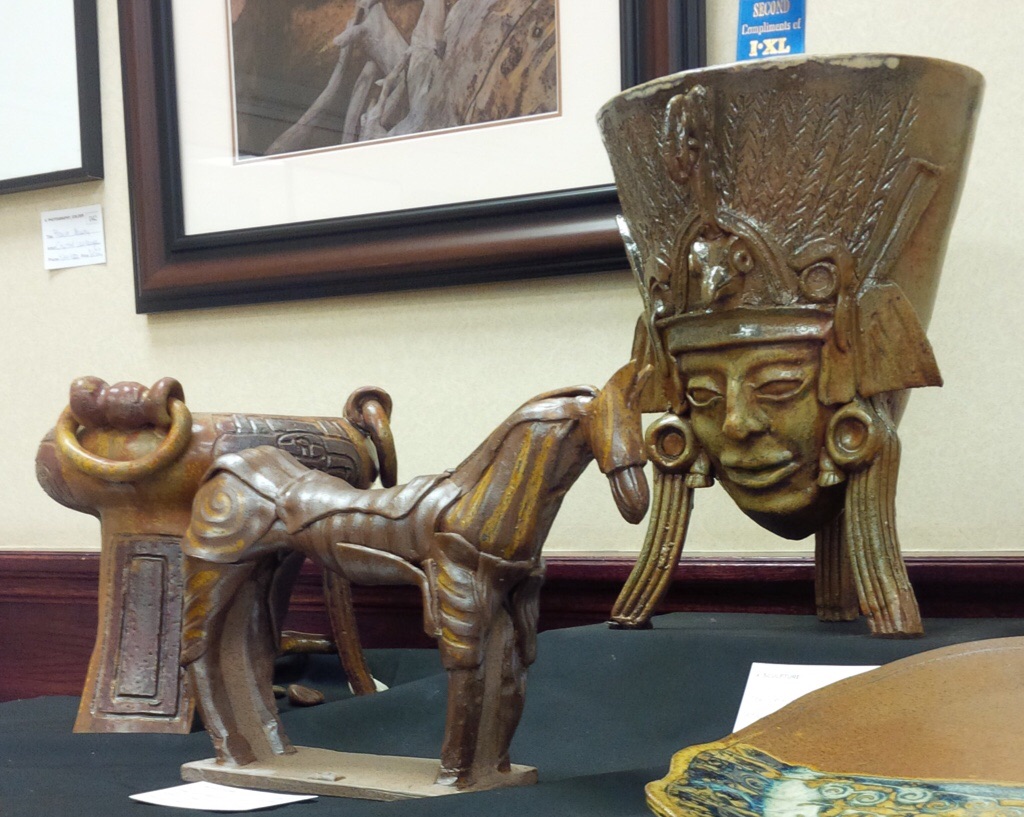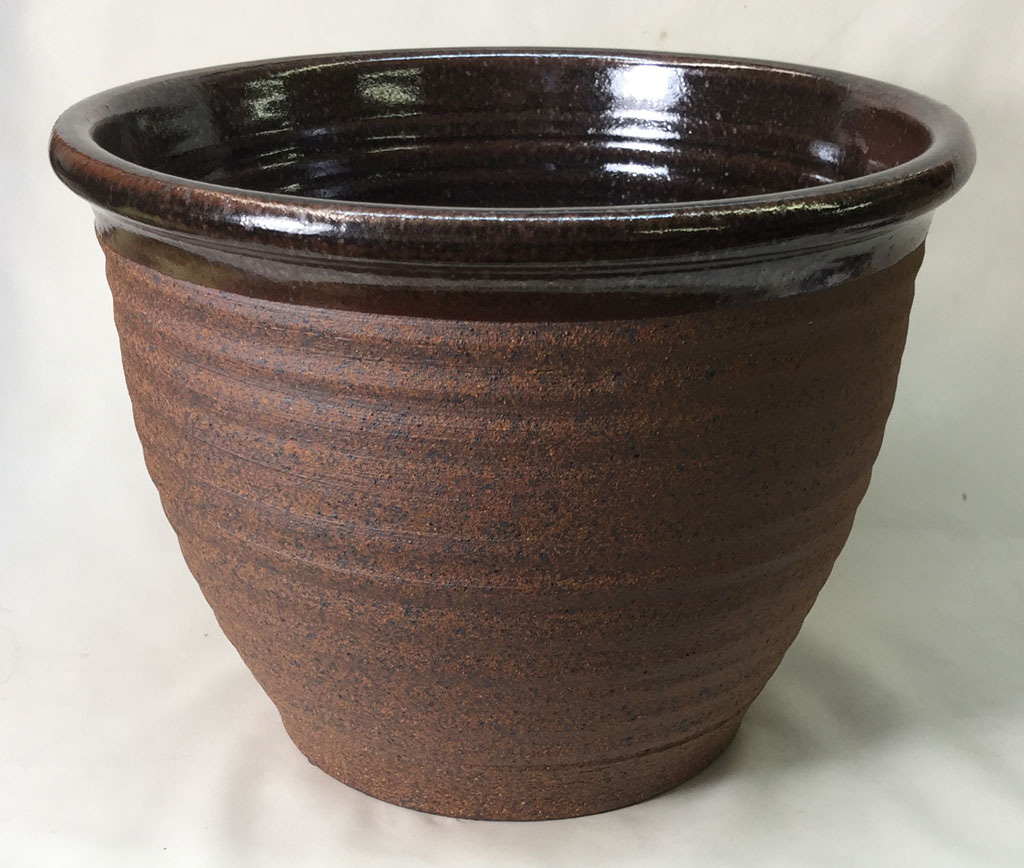H440G
Description
High temperature, grogged, medium plastic, non-vitreous, dark brown-red burning, native body for reduction fired sculptural pieces. H440G is blend of a refractory white fireclay, a highly stained and speckled bentonitic material, some fine sand and two red burning clays. Its formulation is different than our standard H440 mix, having materials that add more speckle and texture to the fired surface. Compared to H441G it is less plastic and feels coarser; it is not as refractory and thus is more likely to warp in the kiln if shapes are extreme.
Process Properties
H440G vents water much better than our non-grogged materials, it has a lower drying shrinkage, and it does not propagate cracks as much. The grog also assists the healing process during joining. When attaching pieces we recommend that you use slip of low water content, apply as much pressure as possible, and move surfaces latterally against each other so that the slip can fix the two together firmly. You will probably find this body less comfortable to throw on the potter's wheel.
Thicker ware or pieces of uneven cross section should be given adequate time to dry. Thus it is often necessary to cover larger pieces with cloth and plastic to slow drying down enough to make sure it occurs evenly throughout. Final drying should be done under heated conditions to assure that all water is expelled before firing. We recommend that you preheat your kiln overnight on low to give plenty of time for remaining water to be removed. This is especially true in electric kilns where there is no draft to take water vapor away.
Our grog clays are somewhat susceptible to water splitting because the grog exists in a matrix that contains sand and coarse clay particles. While this open structure has advantages, one of the disadvantages is that splits in the plastic matrix can start and propagate more easily.
Firing
H440G is the body of choice for iron brown burning high fire reduction sculptural ware. While its grog content provides extra stability during firing, it is not as resistant to warping as is H441G. While not fully vitrified, it does mature enough to pose some warping problems with severely overhung or extreme shapes. To deal with this you might try firing a little lower in reduction and watching the geometry of your shapes to make them resistant to warpage. At cone 8R, H440G is redder in color than it is at cone 10R. Note that H440 and H440G are not the same mix, H440G burns a little darker in reduction and in oxidation the color is a dark leather tan through the cone 7 to 11 range.
It is best to fire larger sculptural forms on a thick slab made from the same clay. This slab will absorb the stresses associated with shrinkage and friction against the shelf to help prevent cracking and warping. If ware is to be put outdoors, you are advised to seal the pore structure against water absorption and associated damage due to freeze-thaw. Building supply stores have sealant products used for concrete and brick.
Since we add dark colored grog and materials to H440G which are both variable in nature and quite high in pyrites and other iron impurities, H440G will produce a more specking and the specking will be more variable in nature than regular H440. Keep this in mind if you plan to make items that must have a consistent surface appearance time after time.
Glazing
Since H440G is dark firing in reduction, its iron will bleed into glazes and colors and significantly stain them. This effect will enhance the appearance of earthtone and variegated glazes. H440G contains significant amounts of iron stone concretion particles which melt vigorously in high temperature reduction that blossom on the bare clay surface or bleed up through glazes to create what are called 'iron blossoms'.
Since H440G does not fire to high strength it is not suitable for functional ware. However if glazes are used on decorative pieces it is good to be concerned about glaze fit since a piece can be significantly weakened if the glaze is under excessive compression or tension.
Most sculptors find that that slips and oxides are effective with this type of material, especially if the surface has been altered or treated in any way. However be sure to match the drying and firing shrinkage of your slip to the body.
Physical Properties
Drying Shrinkage: 5.5-6.5% Dry Strength: n/a Water Content: 19.0-20.5% Drying Factor: C120 Dry Density: n/a
Sieve Analysis (Tyler mesh):
+35: 6.0-8.0% 35-48: 3.0-6.0 48-65: 4.0-7.0 65-100: 6.0-9.0
Fired Shrinkage:
Cone 6: 3.5-4.5% Cone 8: 4.0-5.0 Cone 10: 4.5-5.5 Cone 10R: 4.5-5.5
Fired Absorption:
Cone 6: 8.0-10.0% Cone 8: 7.0-9.0 Cone 10: 6.0-8.0 Cone 10R: 5.0-6.0



